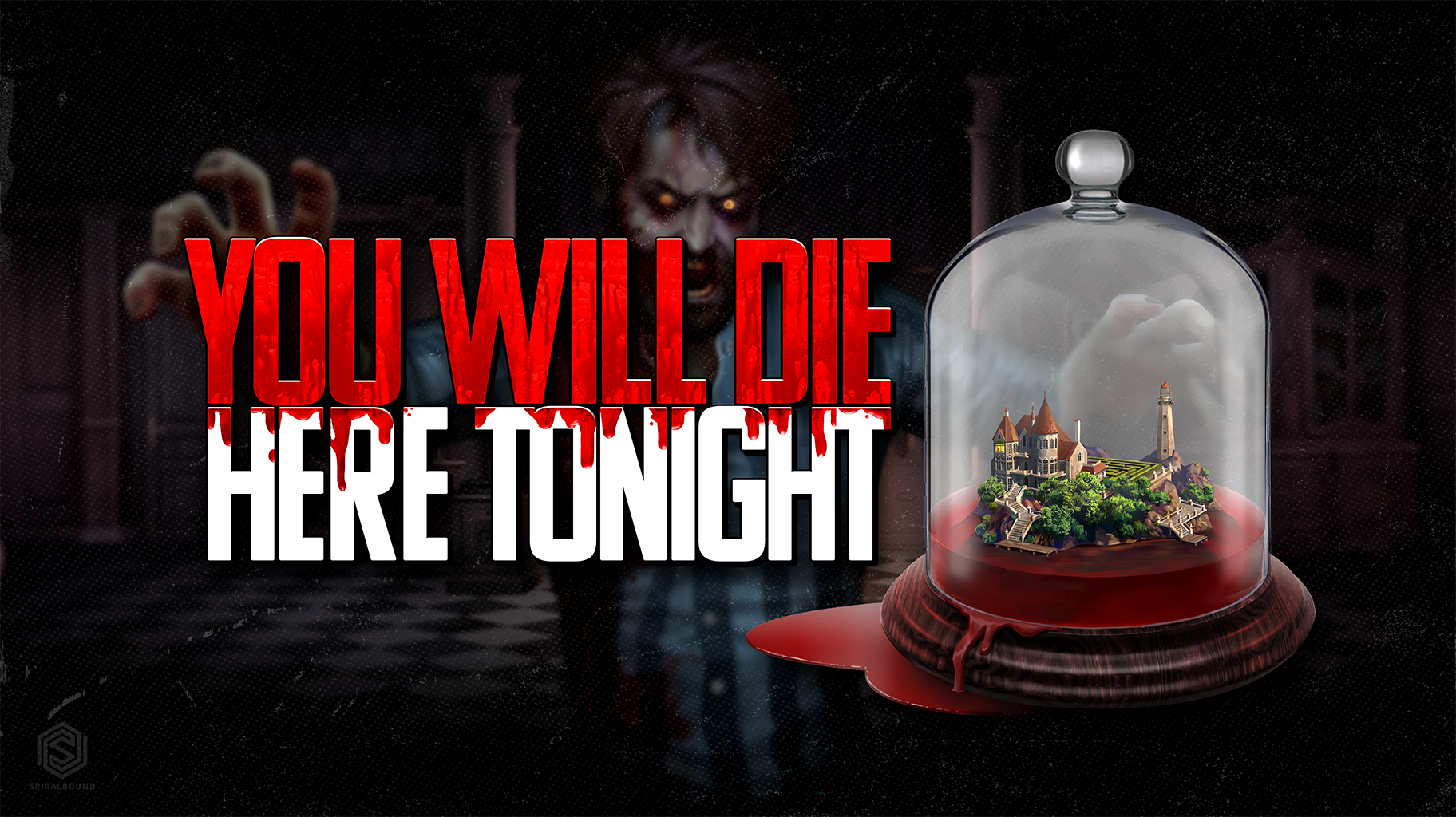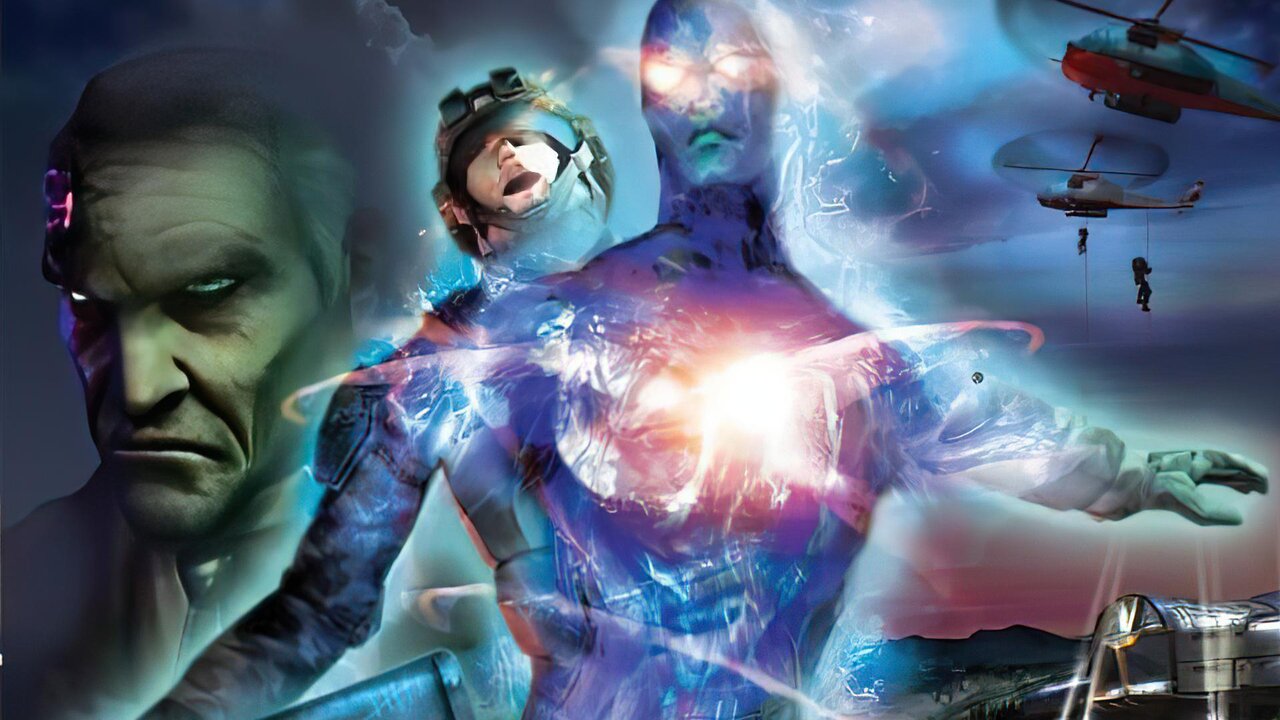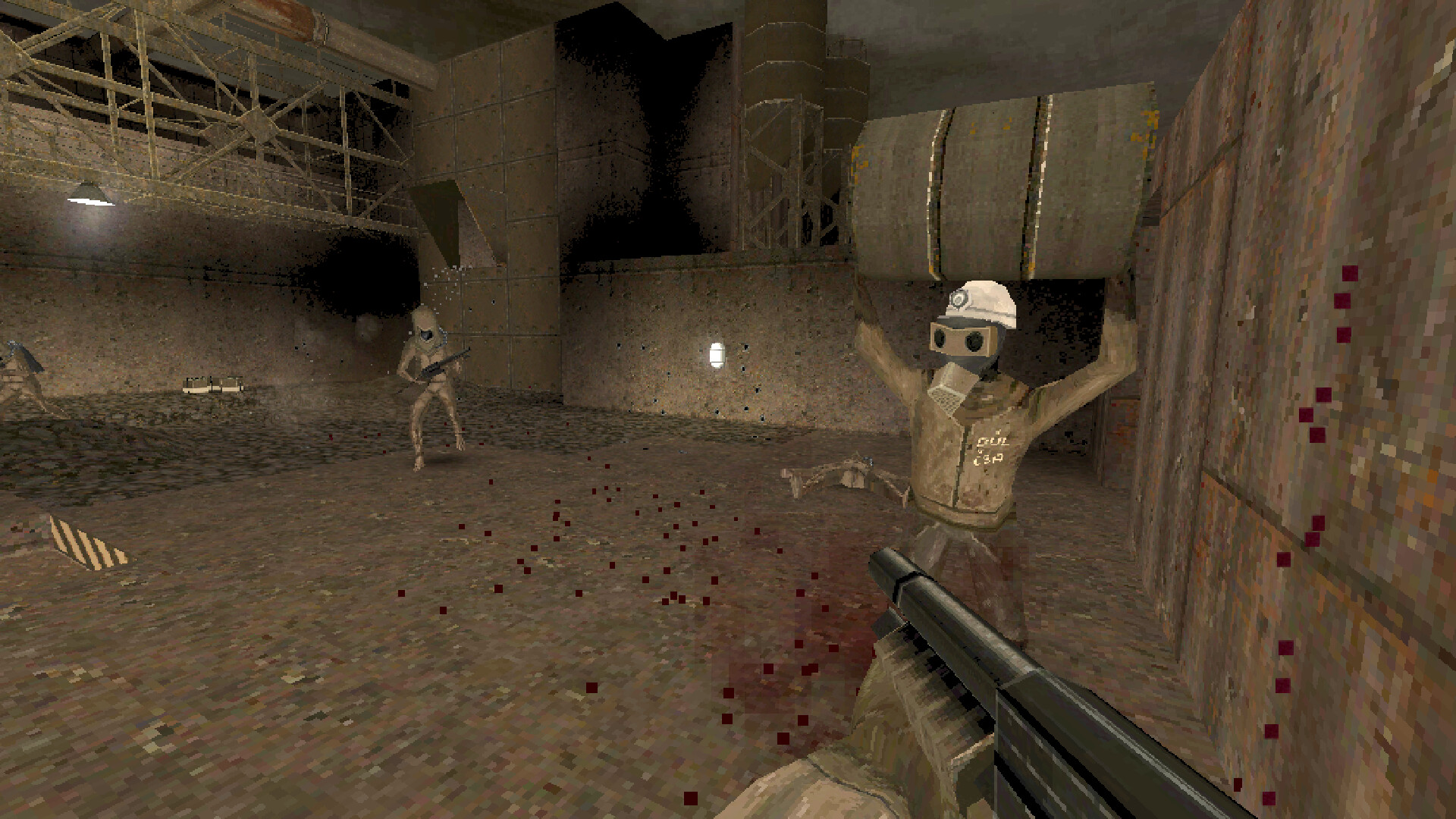Dusk Review – I Could Play It Til Dawn
When you first hear about it, Dusk almost seems like an oxymoron. A modern retro game that takes almost exclusively the elements of old school FPS games, turning it into something fresh. And yet, playing the game, you see how it all works beautifully. Why reinvent the wagon wheel when you could simply add chrome spinners? Taking the simple gameplay of Doom and Quake and creating a game with modern level design, New Blood’s David Szymanski has created one of the best retro FPS games to come out in a long while.

I imagine that Dusk is heavily inspired by Deep Silver’s Painkiller and Monolith’s Blood. It’s a similar narrative here, with a heavy influence by Lovecraftian mythos. In Dusk you play as the “Dusk Dude,” who wakes up in a basement about to be dismembered by chainsaw-wielding overall-clad burlap-sack-hood-wearing fellows. Cutting through them with a pair of sickles, Dusk Dude escapes to the surface, finding himself trapped in the town of Dusk, Pennsylvania. The chainsaw guys, fireball throwing cultists, mutant cows, and even shotgun wielding scarecrows are all on the hunt for you.
There’s three different campaigns in Dusk, each with their own story arc and style. The first is rural Pennsylvania, where DuskDude fights to survive against the cultists and mutant cows. Barns, swamps, forests and more are the majority of the scenery here. The next campaign is a sort of industrial zone. Beginning in the outskirts of the town, you go through factories and city streets, fighting cultists as well as soldiers. And the final campaign is a sort of nightmare realm. You enter the Otherworld and fight all kinds of monsters and cultists.

Each campaign consists of 11 areas, ranging in size but taking at least 10-20 minutes each, more if you explore. So 33 levels in all, and every one of them is unique and interesting. The level of detail in Dusk will prove to anyone who plays just what a step up from the bog standard retro imitation FPS. Detail not only in the intricacy of the maps, but also in the visual style. Just like classic shooters such as Blood and the original Shadow Warrior, an incredible amount of love and care has been put into each level, all of which feel interesting and unique.
Being a retro-inspired FPS, Dusk has basically the same gameplay as Quake. Fans of this genre already know what to expect; combat that is straightforward and elegant. Extremely fast paced firefights where the best strategy is to keep running and bunny-hopping full speed, dodging attacks while unloading bullets. It may seem simple at first, but understanding each enemy and the environment, positioning, and choosing who to shoot first are critical for success, and as the campaigns go on, these battles become all the more difficult.

Like most retro shooters, Dusk does not have any kind of regenerating health. You can only regain your health bar (or rather, health number) by finding pickups. Same with ammo and other items, a big part of the gameplay loop is looking for supplies to keep the guns going. Most areas have more than enough ammo and health for a competent player to not worry, at least on medium difficulty.
Exploration in Dusk is important, with anywhere from 5-8 secrets in every level. Many of these secrets are actually linked to each other. You might find a secret room with some goodies behind it, but closer inspection reveals another secret door inside of it. Through that secret door you may find a whole secret area full of enemies. And in that secret area you might find, for instance, a basketball. Take that basketball, find a basketball hoop, shoot some buckets, and yet another secret area opens up!

These compounding secrets, each with exceedingly better bonus pickups and weapons, make searching every nook and cranny in Dusk a lot more interesting. Certainly it will be a challenge for completionists. After completing almost every level, I was shocked to see that I had missed the majority of secrets and on occasion, dozens of enemies.
Dusk has something like 10 different weapons. One critical feature of this genre is the weapons. In this regard, Dusk does pretty well. Most of the weapons are fairly ordinary; dual pistols, an assault rifle, stuff of that nature. About what you would expect. Some of them are a bit more interesting, like a powerful hunting rifle and dual wielding lever action shotguns, spinning them like the T-800 in Terminator 2. Not only are they fun and useful, they’re also cool to look at.

There are three power weapons in Dusk. The first I found was a magic crossbow that shot green bolts. These bolts pierce through enemies (and possibly through walls?), which is cool but ultimately not super useful in most situations. The hunting rifle was better, in my opinion. Then there’s the “Riveter,” which is functionally a rocket launcher like any other. Extremely powerful, and with surprisingly frequent ammo, the Riveter is a lot of fun. And finally, the mortar. The mortar left a bit to be desired. It’s a grenade launcher, with the ability to detonate shots manually. However, there’s either a timer or a required range, because I often found myself unable to detonate when I really needed it. Not only that, the mortars move really slow, so unless I was in a closed space, I’d generally use something else.
But if the only complaint I have with the entire game is that one gun is a little bit difficult to use, I’d say that’s a pretty good sign. Dusk is a lot of fun. The campaigns are great, the detail is great, the enemy design is great, the style is great, and 9/10 weapons are great. Probably 10/10 weapons are great and I’m just a bad player. If you are a fan of Quake, Doom, Blood, or really any shooter, Dusk is a must-play.




